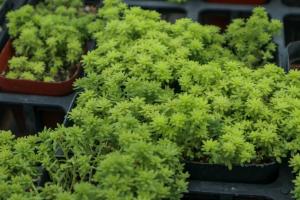What Plant Cell Absorbs Water
Plant cells are responsible for many essential functions that allow plants to grow and thrive. One of the primary functions of plant cells is to absorb water from the surrounding environment. There are several structures and mechanisms involved in this process that we will discuss in this article.
The Role of Cell Walls in Water Absorption
One of the primary structures involved in water absorption in plant cells is the cell wall. The cell wall is a rigid outer layer that surrounds the cell membrane and provides support and protection for the cell. It is also permeable, meaning that it allows water and other molecules to pass through it.
The cell wall is composed of cellulose, a complex carbohydrate that forms a mesh-like structure around the cell. This structure creates tiny channels that allow water to enter the cell. The process of water entering the cell through the cell wall is called osmosis.
Water Absorption through Root Hairs
In addition to the cell wall, another important mechanism for water absorption in plant cells is through root hairs. Root hairs are small, finger-like projections that grow from the surface of plant roots. These projections increase the surface area of the root, allowing it to absorb more water and nutrients from the soil.
The root hairs also contain special cells called specialized parenchyma cells that are responsible for actively transporting water into the plant. These cells use energy from the plant to pump water molecules across the cell membrane and into the cell. Once inside the cell, the water is transported throughout the plant to where it is needed for growth and other functions.
The Role of Vacuoles in Water Absorption
Another important structure involved in water absorption in plant cells is the vacuole. The vacuole is a large, fluid-filled organelle that is found in plant cells. It is responsible for storing water, ions, and other molecules that are important for plant growth and survival.
The vacuole plays a crucial role in maintaining the water balance within the cell. When water enters the cell through osmosis, it is stored in the vacuole, which helps to maintain the turgor pressure within the cell. Turgor pressure is the pressure that is exerted on the cell wall by the contents of the cell. It is what gives plant cells their rigidity and allows them to stand upright.
Conclusion
Water absorption in plant cells is a complex process involving several structures and mechanisms. The cell wall, root hairs, and vacuole all play important roles in absorbing water from the environment, transporting it throughout the plant, and maintaining the proper water balance within the cell. Understanding these processes is important for the growth and survival of plants, as well as for the production of food and other essential products derived from plant cells.

 how many times do yo...
how many times do yo... how many planted tre...
how many planted tre... how many pine trees ...
how many pine trees ... how many pecan trees...
how many pecan trees... how many plants comp...
how many plants comp... how many plants can ...
how many plants can ... how many plants and ...
how many plants and ... how many pepper plan...
how many pepper plan...































